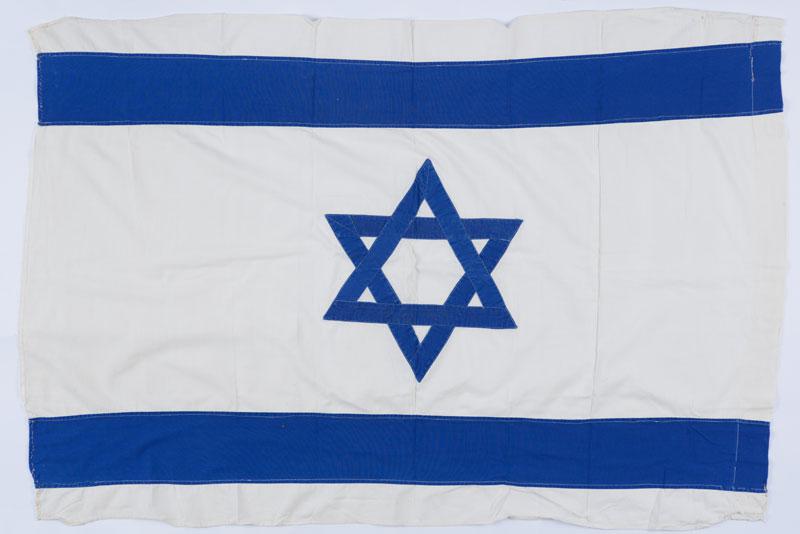

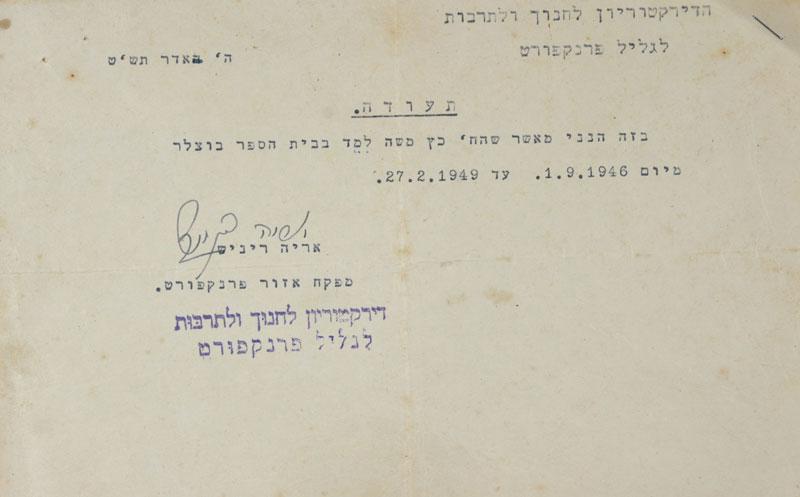

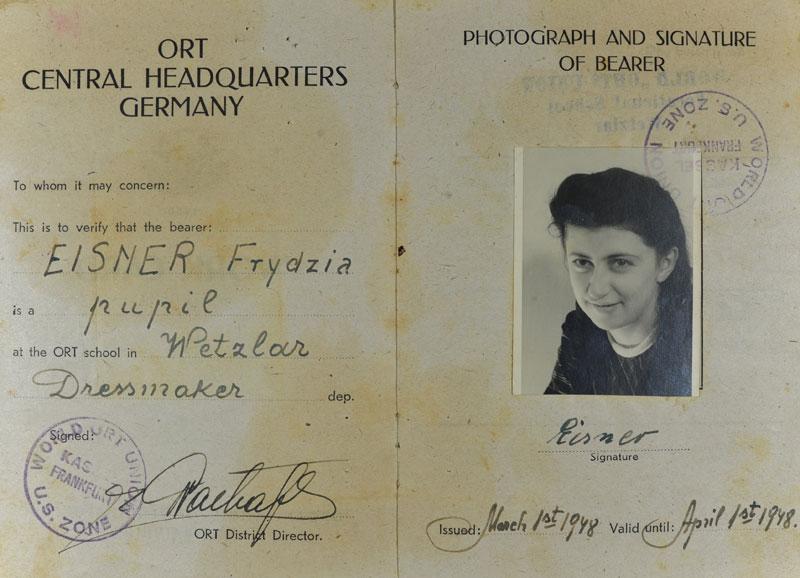

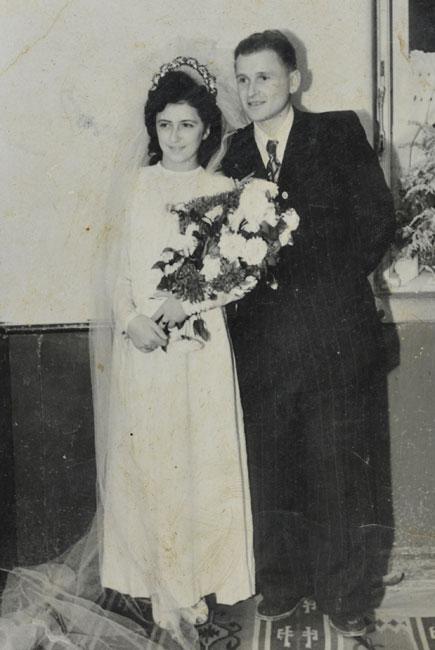

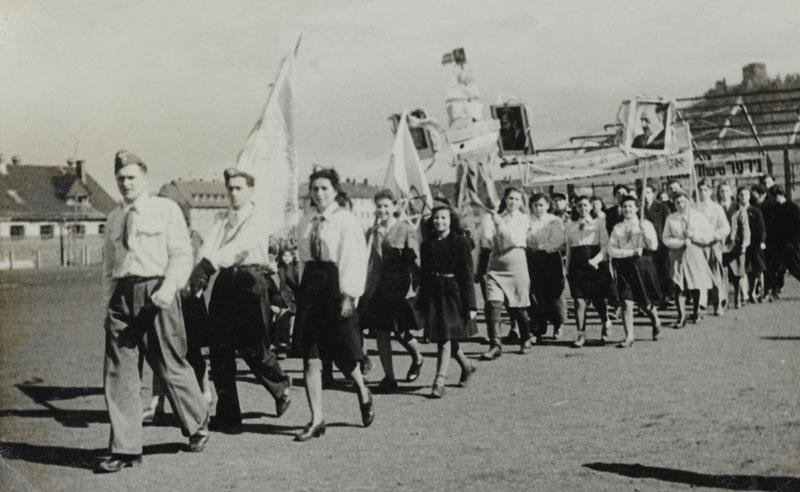

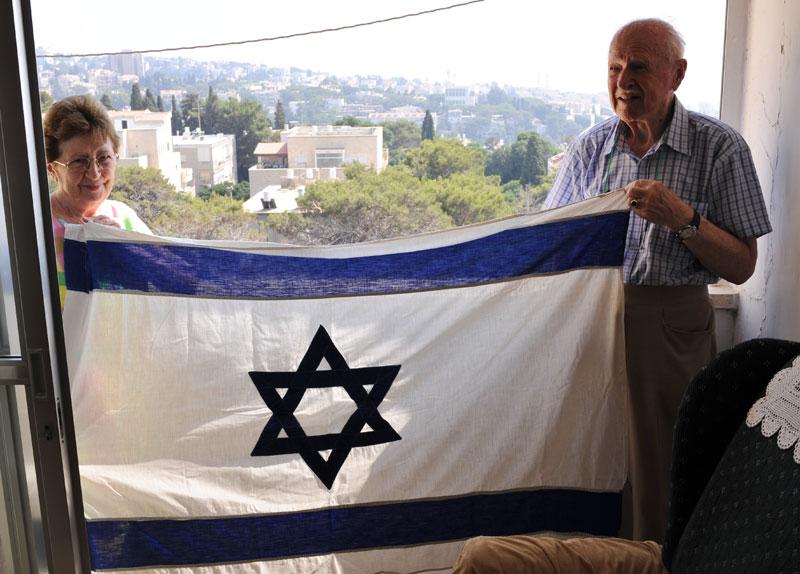

Sunday to Thursday: 09:00-17:00
Fridays and Holiday eves: 09:00-14:00
Yad Vashem is closed on Saturdays and all Jewish Holidays.
Entrance to the Holocaust History Museum is not permitted for children under the age of 10. Babies in strollers or carriers will not be permitted to enter.












Frieda and Moshe Katz met in the Wetzlar Displaced Persons camp near Frankfurt, Germany.
Moshe was born in 1926 in Jarosław, Ukraine. In 1939 he fled with his family to the area under Soviet control. The family members were deported to Siberia, where they were sent to forced labor. In 1942 they were released together with all the other Polish citizens, and went to Kazakhstan. In the summer of 1946, Polish citizens were permitted to return home, and Moshe and his family reached the Wetzlar DP camp in Germany.
Frieda was born in 1932 in Stanislawow, Poland. The Germans occupied the city in July 1941. Frieda was visiting her aunt and uncle at the time, and never saw the members of her family who were murdered in Stanislawow again. Frieda was moved to the Bucacz ghetto where she survived a number of Aktions. She was sent to the killing pits but survived. She returned to the ghetto and found her uncles; they had fled when the ghetto was liquidated and had been living in hiding for a year and a half, initially in a local non-Jew’s house and later in the fields and forests. In March 1944, they were liberated by the Red Army. They returned to Poland, where Frieda joined the “Dror” youth movement and decided to immigrate to Eretz Israel (Mandatory Palestine). They wandered between Czechoslovakia and Austria until they reached the Wetzlar DP camp in Germany.
Moshe was Frieda’s counsellor in the camp’s Zionist youth movement, and he taught her Hebrew.
Frieda studied in the ORT school that was established in the DP camp. In the course of her studies, she helped sew a flag of Israel in the school’s sewing workshop. Frieda relates that as it was difficult to obtain fabric for the flag, it was eventually sewn using the camp bed linen. The Zionist youth movement in the camp ‘adopted’ the flag, and the members would take it with them to demonstrations lobbying for the gates of Eretz Israel to be opened to refugees.
Frieda relates:
Just as the Western Wall gives people hope and faith that their prayers will be answered, so the flag gave us hope that one day we would have our own State.
On the day that the State of Israel was declared, all the inhabitants of the camp, some 5,000 people, went to celebrate in the camp sports field.
We sang, we danced, we cried and we started to believe that we really would immigrate to Israel in the near future.
Frieda married Moshe in the camp on her seventeenth birthday - 21 September 1948. Half a year later, in March 1949, the couple immigrated to Israel together with Moshe’s family. They took the flag with them and ever since, each year on Israel’s Independence Day, they have hung it in their home in Haifa.
Moshe and Frieda recently donated the flag to Yad Vashem for posterity, so that its story can be shared for generations to come.
“The flag accompanied us from then, until today,” says Frieda. “If it could talk, it would be able to tell far more than we have done.”

Thank you for registering to receive information from Yad Vashem.
You will receive periodic updates regarding recent events, publications and new initiatives.

"The work of Yad Vashem is critical and necessary to remind the world of the consequences of hate"
Paul Daly
#GivingTuesday
Donate to Educate Against Hate


Worldwide antisemitism is on the rise.
At Yad Vashem, we strive to make the world a better place by combating antisemitism through teacher training, international lectures and workshops and online courses.
We need you to partner with us in this vital mission to #EducateAgainstHate
The good news:
The Yad Vashem website had recently undergone a major upgrade!
The less good news:
The page you are looking for has apparently been moved.
We are therefore redirecting you to what we hope will be a useful landing page.
For any questions/clarifications/problems, please contact: webmaster@yadvashem.org.il
Press the X button to continue



